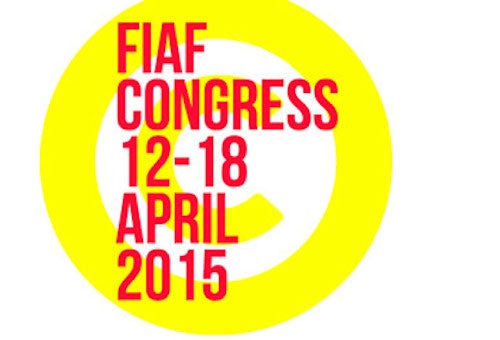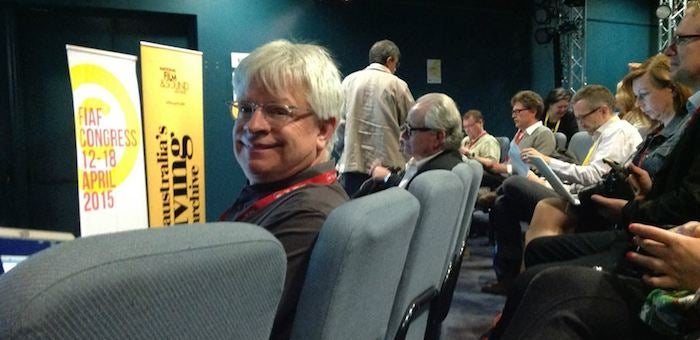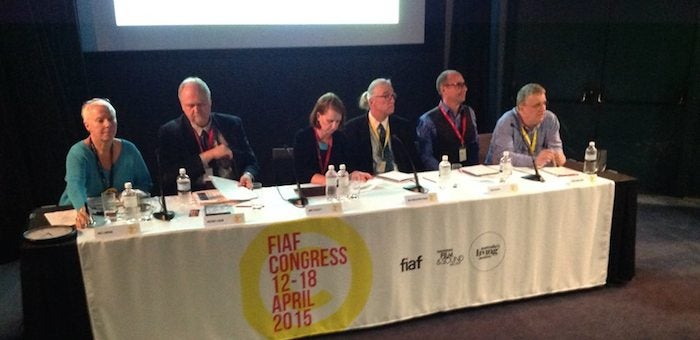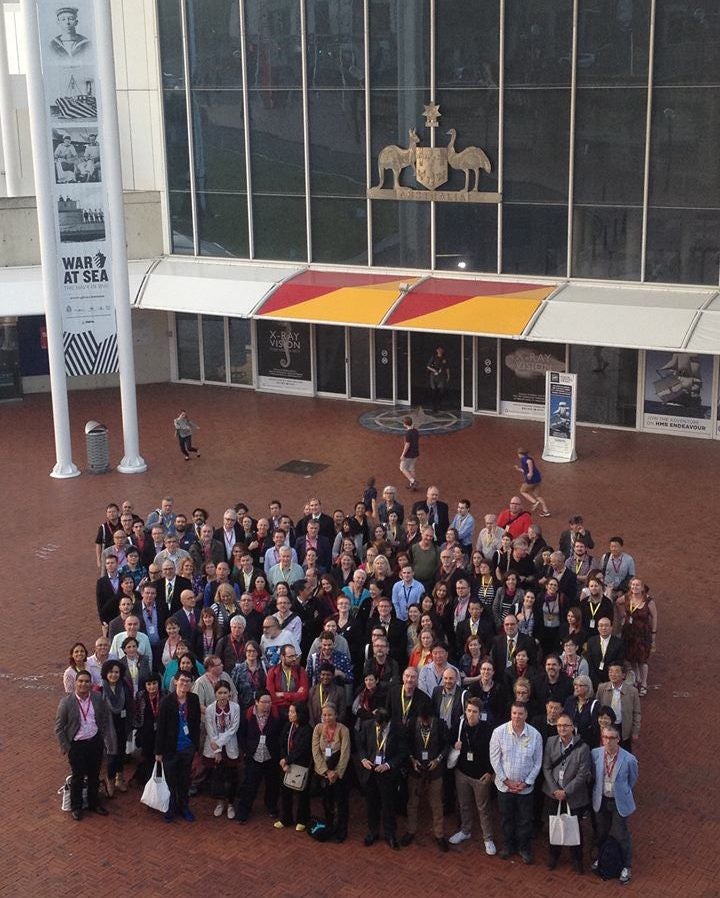
The National Film & Sound Archive of Australia hosted this year’s Congress of the International Federation of Film Archives (FIAF), from April 12 – 18 in Sydney and Canberra. Apart from closed meetings of the Executive Committee, various commissions, regional organizations, the general assembly and excursions, the Congress also included a two-day, public symposium. It was held in the Australian National Maritime Museum under the banner, “Fairly Legal: Intellectual property, content regulation and film archiving: where are we heading?” Given the fact that the internet and expanding digital content delivery of moving images have forced FIAF members to grapple ever more with new copyright issues, the symposium’s topic was more than timely.
Bright and early Monday morning, Rick Prelinger, now a professor at the University of California, Santa Cruz, gave the keynote speech, in which he first challenged analog film archives to out-think “corporate dot com monsters that have become lumbering bureaucracies.” He noted that the turn to digital is not a one-time project, but rather an ongoing program in which analog work is complimentary to the digital. He challenged film archives to think outside the box in terms of making their collections visible and accessible, rather than hiding behind copyright issues or antiquated mission statements.

The first panelists were Greg Lukow and Hope O’Keefe from the Library of Congress, discussing orphan works and how the Library deals with them in terms of preservation and access. O’Keefe, who is a copyright lawyer, noted in particular that archives have not made enough use of Section 108(h) of the Digital Millennium Copyright Act of 1998. It allows libraries and archives to reproduce and make accessible a published work in the last 20 years of copyright (produced between 1923-1938), if the work is not subject to commercial exploitation or is not available at a reasonable price. This occasioned some discussion in the room about measuring fair use against fair risk, and with some participants pushing to be much more aggressive about putting more orphan work online. O’Keefe also noted that the Sec. 108(h) strategy was more productive than trying to chase down rights holders, because “the process is horribly expensive and when you find them they want more money than you can pay.”

While UCLA motion picture archivist Todd Wiener and I reported on our digitization project to put 20 years of In the Life online, Nicola Mazzanti (Cinémathèque royale de Belgique) discussed the efforts of the Association des Cinémathèques Européennes (ACE) to sign an agreement between rights holders and archives governing the digitization and restoration of materials. He concluded he didn’t understand the agreement, which came down to a case-by-case basis. Next, Michael Loebenstein (National Film & Sound Archive, Australia) and Jose Manuel Costa (in absentia) discussed various other copyright issues impeding progress in digitization.
The afternoon sessions then switched to legal deposit issues, which are of concern to major national archives. Thomas Christensen (Danish Film Institute) talked about the fact that legal deposit has changed archive workflows completely, since archives are no longer receiving 35mm theatrical prints, but rather digital files. As a result, archives will still preserve domestic productions, as they are obligated to do, but foreign films and local versions of foreign films would no longer be preserved, given the high cost of migration (as opposed to the low cost of passive preservation of analog prints); many  materials will therefore be lost. Finally, Akira Tochigi (National Film Center, Tokyo) discussed acquisition and preservation of film materials without a legal deposit law, while Eric Le Roy (Centre national du cinéma et de l’image animée, Paris) presented a history of the French legal deposit law, which has been on the books in one form another since the French Revolution. Since 1993, the CNC has been responsible for taking in legally deposited films, but last year only 39 of 350 films produced in France were actually deposited.
materials will therefore be lost. Finally, Akira Tochigi (National Film Center, Tokyo) discussed acquisition and preservation of film materials without a legal deposit law, while Eric Le Roy (Centre national du cinéma et de l’image animée, Paris) presented a history of the French legal deposit law, which has been on the books in one form another since the French Revolution. Since 1993, the CNC has been responsible for taking in legally deposited films, but last year only 39 of 350 films produced in France were actually deposited.
The second day of the symposium was dedicated much more to questions of actually getting films online through archive websites. In this regard, the British Film Institute, the EYE Film Museum in Amsterdam, and the Swedish Film Institute have led the way with mass digitization projects. The BFI’s Helen Edmunds and Stephen McConnachie described their efforts to digitize 10,000 films in five years, including workflow, metadata, digital storage and back-end migration. Leontien Bout from EYE also elaborated on their project, stating that to avoid copyright issues, they have chosen to focus on orphan films, since these can be distributed on the world wide web without issue. Jon Wenstrom from Sweden noted that they had received funding to digitize 500 films in their collections over the next five years, and that they hired staff and bought equipment to handle the job. As in the case of London and Amsterdam, Stockholm received millions of euros from the government (or the lottery in the BFI case) for the project, a luxury not available to many non-government or smaller archives.
What the symposium really made clear was that digitization has now become a core activity of the FIAF archives, and we all need to be more creative in dealing with orphans and copyright owners to get our material online.
< Back to Archival Spaces blog






 Mobile Navigation
Mobile Navigation

